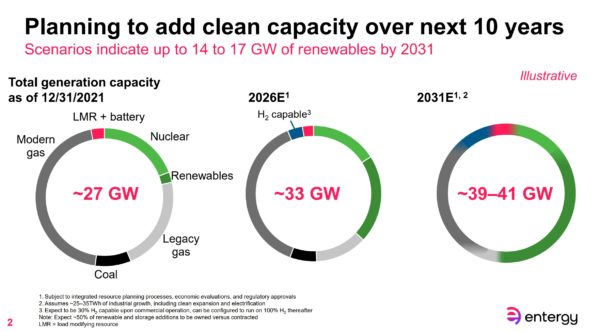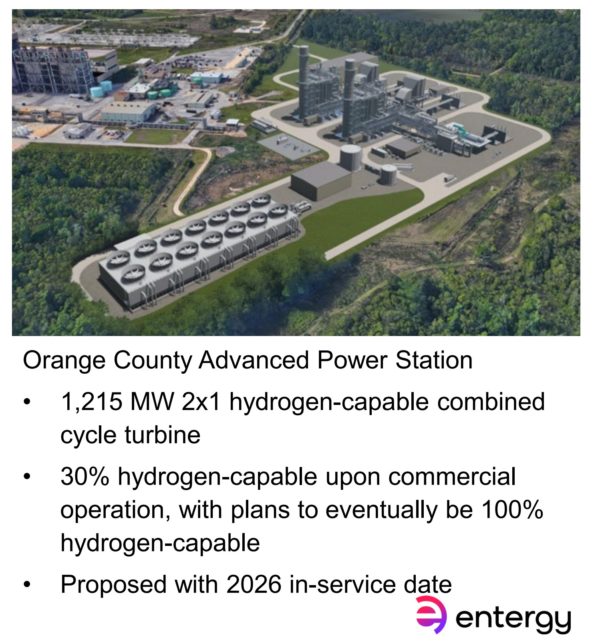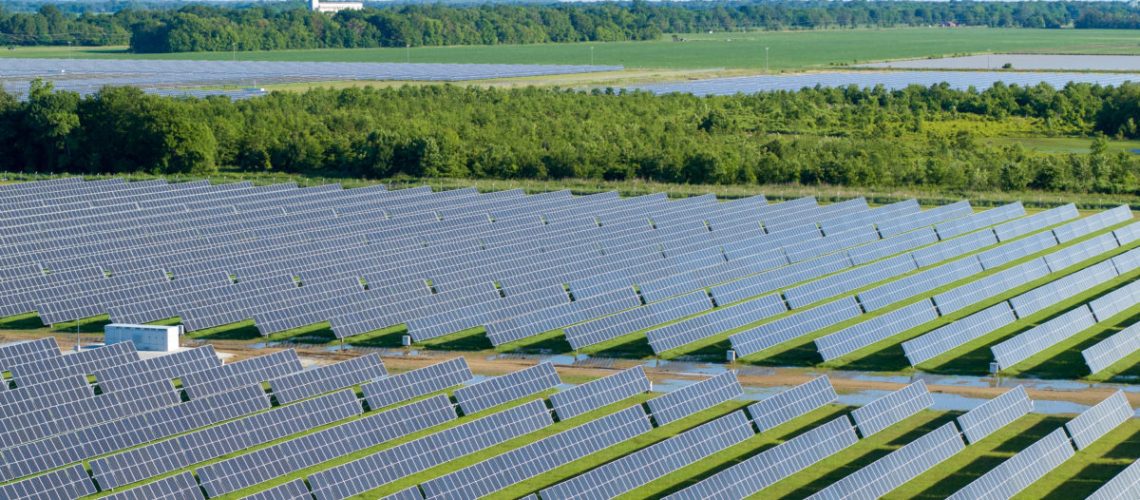The power company has issued 2022 RFPs for 3 GW of new capacity, while projecting up to 17 GW of new renewable capacity by 2031.
Over the last several months, the utility company Entergy has launched a collection of requests for proposals (RFP) for renewable electricity in Arkansas, Louisiana, and Mississippi totaling 3 GW of capacity. Furthermore, according to Entergy’s 2022 Investor Presentation, there’s a chance for 14 to 17 GWac of renewables by 2031.
The RFPs, which span three states, are seeking 500 MW, 1.5 GW, and 1 GW of capacity for Mississippi, Louisiana, and Arkansas, respectively. These 2022 RFPs represent three times the utility’s 2021 RFPs for the three states, which recently totaled 1.5 GW of capacity.
The Mississippi and Arkansas RFP’s launched in February and April, respectively, while Louisiana’s RFP opens for registration on July 11th. The Mississippi and Arkansas RFP websites are light on details, but the Arkansas website has made more substantial documentation available.
The future volume – found in the 2022 Investor’s Presentation – is 21 to 25 times greater than the capacity which is currently in service, and 11 to 13 times greater than the renewable capacity that is currently in progress or announced.

The company notes that they plan to refine their business activities to ‘increase competitiveness’ while developing solar projects. The company’s project development changes include getting involved in early-stage acquisition, buying and holding land, optimizing grid locations and design standards, and procuring their own solar modules.
The company seeks 50% of the projects via a standard power purchase agreement (PPA), and 50% to be BOT (built by third parties, and later transferred and owned by the utility). The PPA terms allowed are 10 to 20 years, with a preference for 15 years or less. All solar projects must be at least 50 MWac in capacity.
Energy storage was mentioned in the investor presentation, however, it did not mention suggested capacities. The RFP suggests that any energy storage included in proposals should provide four hours relative to the power output, and be DC coupled. However, there was also a hydrogen facility announced; the 2.43 GW Orange County Advanced Power Station.

The hydrogen-capable facility is expected to turn on in 2026, and use a mix of fossil gas and 30% hydrogen. It is eventually expected to move toward burning 100% hydrogen. There is no reference to the source of electricity which will be generating the hydrogen.



